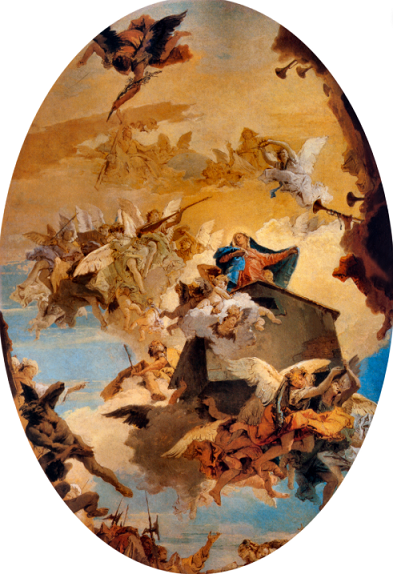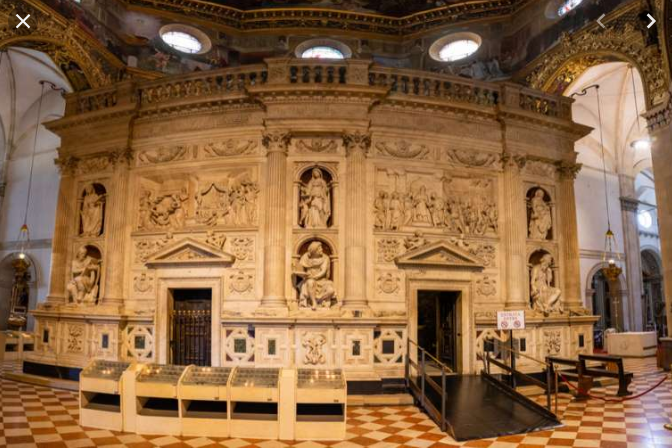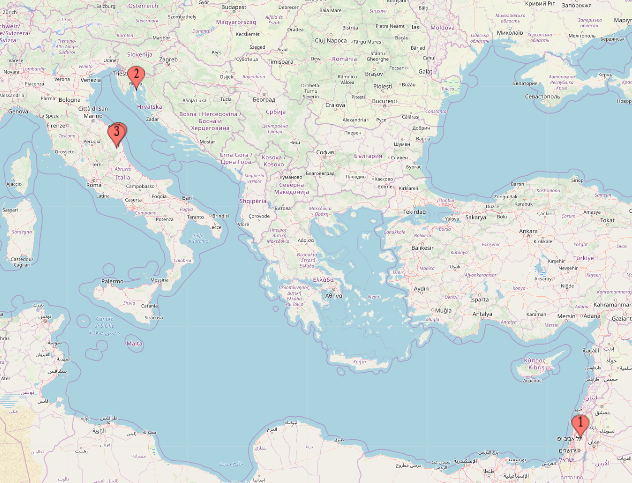The Miraculous Flying House of Loreto: Spreading Catholicism in the Early Modern World
By Karin Vélez
Princeton University Press, 2019, 292 pp.

About a month ago, as part of my Throwback Thursday series, I republished a post about the so-called Holy House located in Loreto, Italy. Catholic tradition has it that the small (13′ x 31′), stone structure was the childhood home of both Mary and Jesus in Nazareth in Judea and that angels miraculously transported the building, first to Trsat (in modern Croatia) in 1291. The inhabitants of that city were said not to have accorded the holy relic the proper degree of veneration, so the angels moved it to Recanati, Italy in 1294, and to an initial and then final location within Loreto in 1295. My those angels were quite capricious!
I had learned that a scholarly work on the “flying house” had recently been published and I discovered that our library had a copy much to my delight. Well, delight quickly turned to frustration as I began reading the book. The acadamese was as thick as pudding and I suspected the book was an expanded doctoral dissertation. A quick internet search confirmed that to be the case. Anyway, either my brain adapted to the affected pomposity or the author gradually toned it down because the last three-quarters of the book read pretty easily.
Okay, back to the “flying house” itself. The author barely examines the actual origins of the flying house myth, which she attributes to imaginative Catholics who had immigrated from Dalmatia (Croatia) to Recanati and Loreto. However, Vélez provides some fascinating information regarding the following:
- Medieval Europe was awash with religious relics attributed to Jesus and Mary and claimed to have been brought from the Holy Land. Bishops and parish priests vied for the most spectacular relics. However, few relics could compete with the supposed house that both Jesus and Mary had allegedly inhabited.
- The Holy House of Loreto myth was spread via the writings of influential 16th century Catholic writers. The pilgrimage destination of the Basilica della Santa Casa encompassing the Holy House, which was encased in an elaborate, carved marble “screen,” was largely completed by the end of the 16th century.
- In that superstitious era, great spiritual powers were associated with relics. Pious pilgrims journeyed for hundreds of miles to view and possibly touch the relics. Vows were made and monies were contributed to the churches. It was big business. Evangelicals (and most modern Catholics) have no idea how popular pilgrimages once were as part of Catholicism. Many of the pilgrims to the Holy House scraped and collected dust from stone walls as a religious souvenir until the practice was prohibited. In a religion devoted almost exclusively to the sensory/tactile, a visit to the Holy House was to walk in the footsteps of the divine.
- Another important relic, a painting of Mary attributed to Gospel writer, Luke, was initially displayed within the Holy House. Pilgrims journeyed to Loreto to view the painting as much as the Holy House. Inexplicably, the darkened painting was at some point replaced with a darkened statue of Mary and baby Jesus with no explanation. Luke was also claimed to have painted the famous Mary and Jesus icon located at Jasna Góra monastery at Częstochowa, Poland. Existing painted icons attributed to Luke number at least 28 (see here) although they are clearly different artistic styles.
- Ignatius Loyola and the early Jesuits were champions of Marian veneration (i.e., worship) and adopted the Holy House of Loreto (174 miles from Rome) as their paramount Marian shrine. As part of their efforts to spread Catholicism throughout the world, they erected imitations of the Loreto flying house at several of their mission sites. While many of the painting and statue icons in Europe were purposely darkened to suggest antiquity as part of the relics charade, such as those at Loreto, in marked contrast no attempt was made to darken the icons created in Asia and the Americas because they clearly fell outside of the Medieval relics sham.
Despite its uniquely outrageous claim to contain the actual physical home of Mary and Jesus, the Basilica della Santa Casa was eventually eclipsed by other Marian shrines as pilgrimage destinations, such as those at Lourdes and Fatima. As a Catholic grammar school student, the nuns regaled us with tales of Lourdes and Fatima, but I don’t recall ever hearing about the Holy House of Loreto. No doubt the plausibility factor chipped away at confidence in the authenticity of this relic. Lourdes’ and Fatima’s apparition mythologies were safe and unassailable by comparison.
Although this book got off to a very slow start, I ended up really appreciating “The Miraculous Flying House of Loreto” for how it “deconstructed” Catholic relic “mythohistory” by example of the bogus flying house. The Holy House mythology and all of its trappings stands in marked contrast to the Gospel message of salvation by God’s grace alone, through faith alone, in Jesus Christ alone.





Silly pope sitting in the bogus “Holy House” He’s a sad little man….
😢💔
LikeLiked by 1 person
Francis is a progressive Jesuit meaning he doesn’t believe in most Catholic traditions or in the Bible.
LikeLiked by 2 people
Thankful for faith in Christ Jesus alone 💕
LikeLiked by 1 person
Yup, sister! So grateful for salvation by God’s grace alone, through faith alone, in Jesus Christ alone rather than chasing after all of those relics, rituals, legalities, ceremonies, etc.
LikeLiked by 2 people
It’s wearing on a person! Jesus says we are to rest in Him-what a blessing that we can do that!!!
LikeLiked by 1 person
Amen!
LikeLiked by 2 people
Just got back from my walk and about to have lunch but looking froward to reading this afterwards!
LikeLiked by 1 person
👋🏻 What’s your steps look like? I had 12K because of working on the leaves. This book was so difficult the first couple of chapters, but then got easier and interesting.
LikeLiked by 1 person
Congrats on the walk! Also glad you heard Sye! I’m out and about so will read the post when I can sit down
LikeLiked by 1 person
👍🏻
LikeLiked by 1 person
Just finished 12K!
LikeLiked by 1 person
Great!
LikeLiked by 1 person
Fell asleep while studying at 11 PM and didn’t get to write a post till 10 AM since I slept in. I guess I”m exhausted from the week’s ministry, reading, studying and walking and eating lol
LikeLiked by 1 person
You must have been REALLY tired to fall asleep at 11!!!
LikeLiked by 1 person
Yeah i was!
LikeLiked by 1 person
Pope Francis “aaragh”😢
LikeLiked by 2 people
Knowing Francis’ Jesuit progressivism/liberalism, it’s somewhat strange to see him endorse this “flying house” charade, but I think he spends most of his waking moments with tongue-in-cheek.
LikeLiked by 2 people
Yes I agree.
LikeLiked by 1 person
Man reading this makes me realize there’s so much historic superstition in Romanism. Flying house of Joseph and Mary going to Europe? Wow…
LikeLiked by 2 people
Thanks! Yes, this flying house relic is so outrageously bogus! Francis doesn’t believe it either but he must put up a pretense.
LikeLiked by 2 people
This pope is also something
LikeLiked by 2 people
Yeah, he’s as bogus as the flying house.
LikeLiked by 2 people
He’s trying to be hip and fly, on a house built on sand
LikeLiked by 2 people
He’s quite a “Mary’s boy” which is contrary to his hip Jesuitism.
LikeLiked by 2 people
If Francis had his way he and his Jesuit group would kill us the heretics.
LikeLiked by 1 person
Probably not, RB. Francis and the previous five popes found they could deal more effectively with Protestants with honey than vinegar. Evangelical pastors now jostle in line for the opportunity to have a photo shoot with the pope.
LikeLiked by 1 person
Yeah
LikeLiked by 2 people